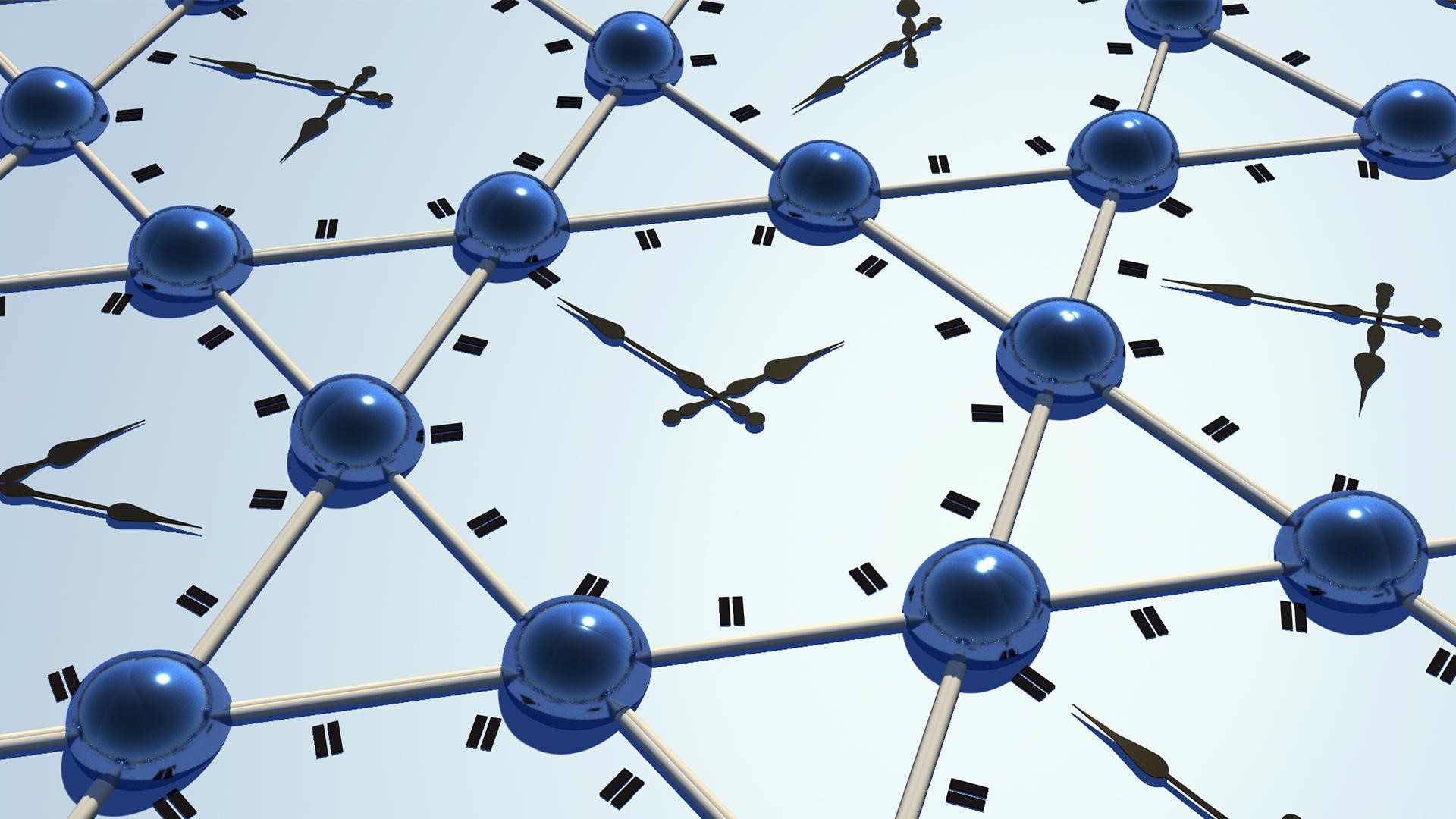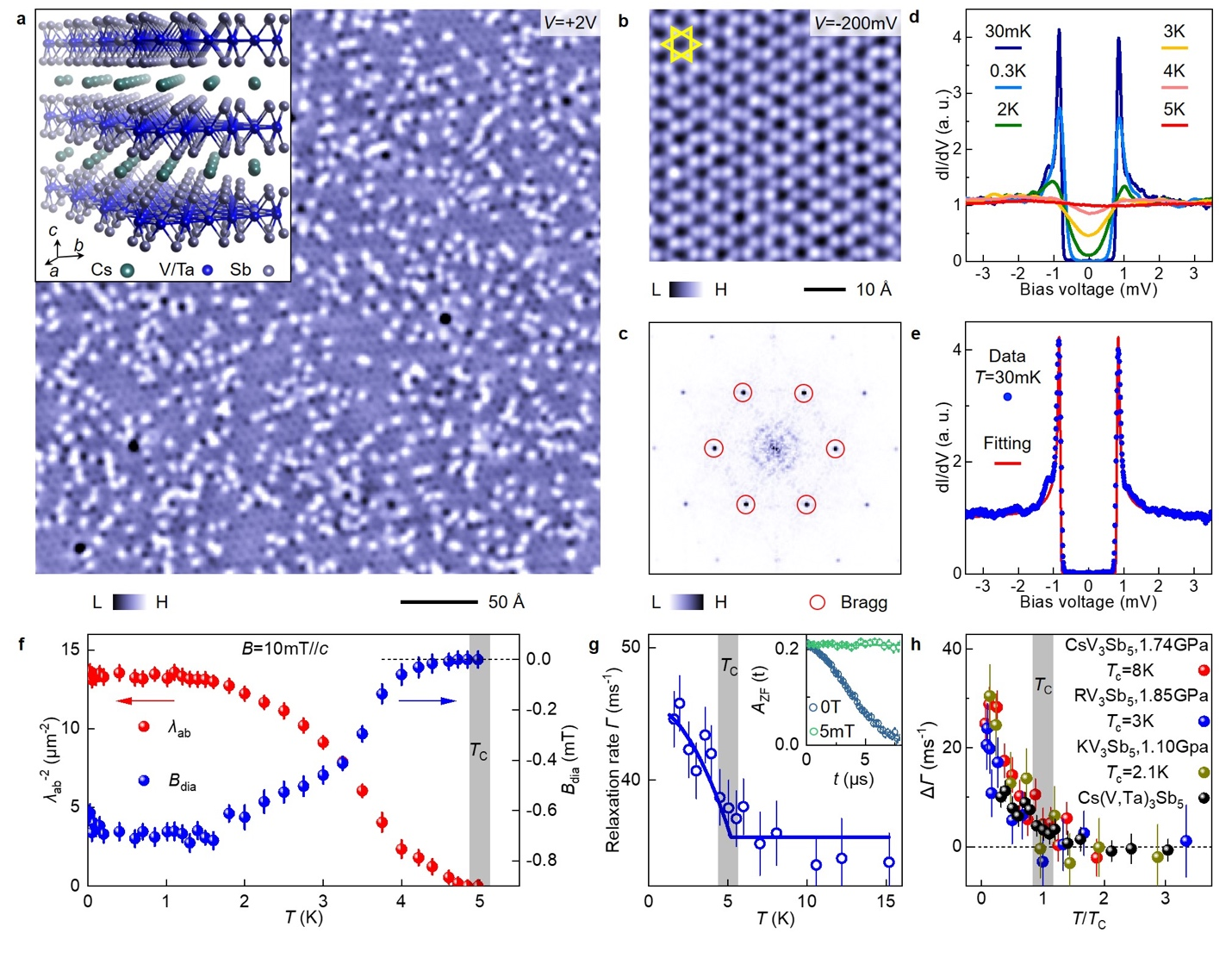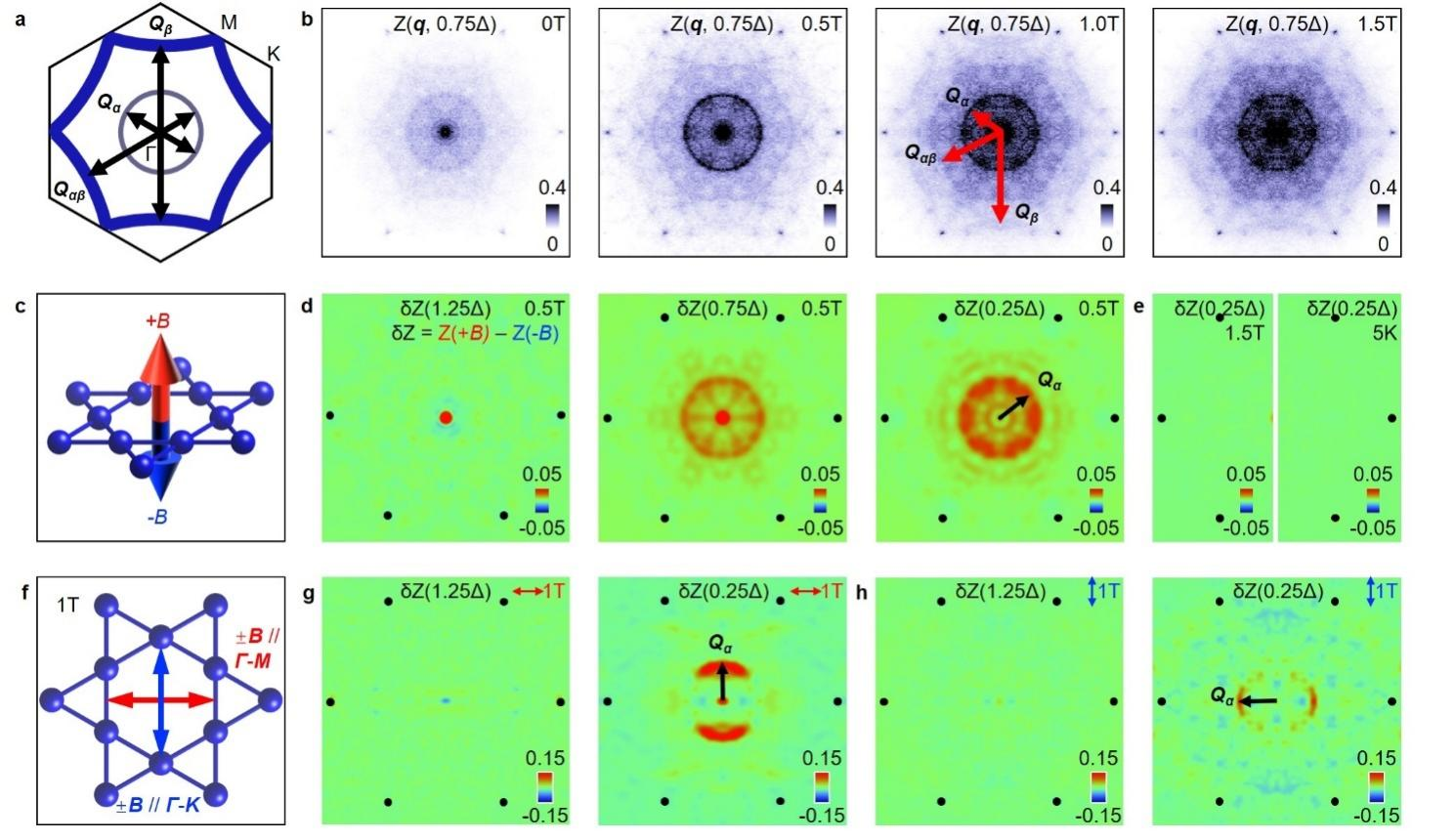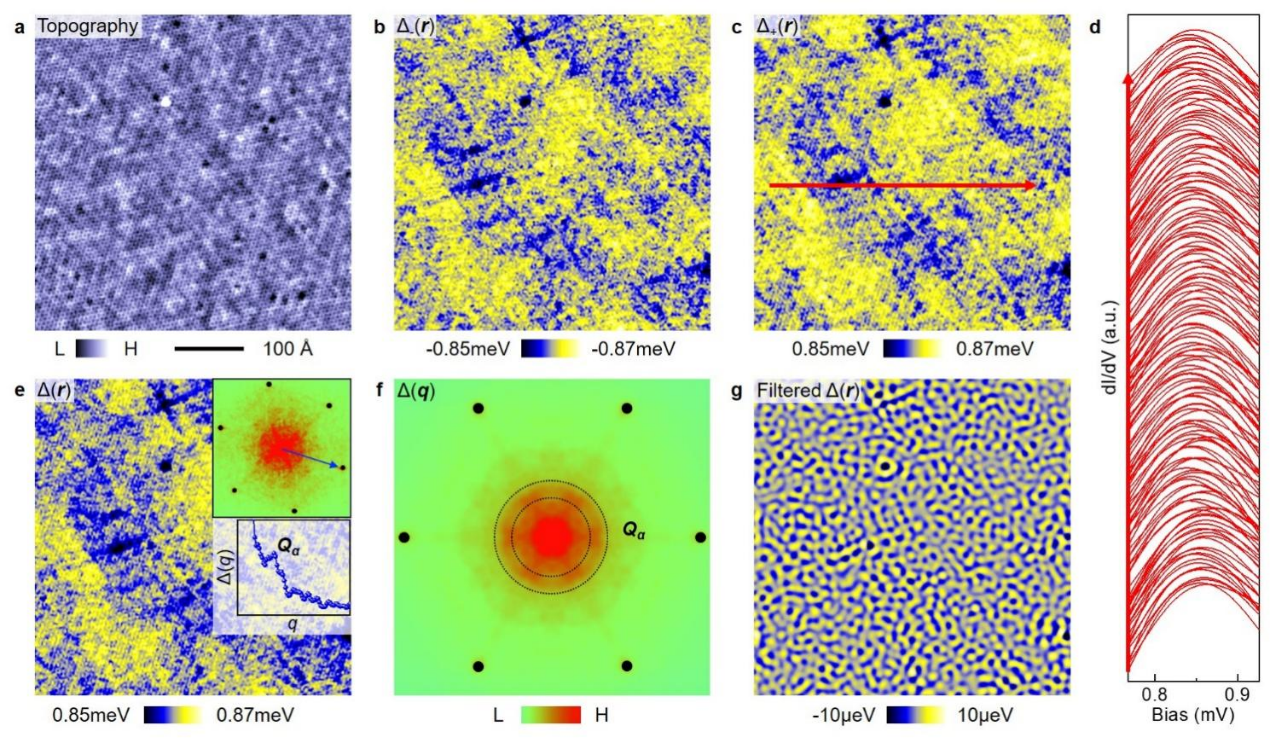Magnetism and superconductivity are traditionally seen as mutually exclusive quantum states. However, as early as the 1950s, physics luminaries Matthias and Anderson [PRL 1, 449-450 (1958); PR 116, 898-900 (1959)] proposed the possibility of ferromagnetic superconductors in lattice frustrated systems. The kagome lattice, a structure composed of triangles interconnected at vertices, is a prime example of geometric frustration.
Understanding and manipulating the interaction between magnetism and superconductivity could lead the way to transformative advancements in quantum computing and energy-efficient technologies. Exploring these phenomena further may unveil new methods to control quantum states, driving breakthroughs in materials science and condensed matter physics.

Figure 1. Schematic diagram of time-reversal symmetry breaking kagome superconductivity
An international research team led by Associate Professor Jia-Xin Yin from the Department of Physics at the Southern University of Science and Technology (SUSTech) has made significant progress in the field of magnetic superconductivity. The team has observed time-reversal symmetry-breaking kagome superconductivity at the Laboratory for Quantum Singularity and Emergent Matter at SUSTech. They developed a high-resolution spectroscopic method to systematically study magnetic superconductors.
Their findings, published in the prestigious international journal Nature Materials, are entitled “Evidence for time-reversal symmetry-breaking kagome superconductivity”.
Jia-Xin Yin discovered that the kagome pattern origins in Chinese folk culture dating back to 200 BC [Physics 3, 157-165 (2023)]. Since 2018, Professor Yin and collaborators have reported a series of quantum manipulations in kagome magnets and superconductors, advancing the frontier research direction: topological kagome materials. They have highlighted that kagome superconductors can serve as important carriers for exploring magnetic superconductivity, referring to them as “magnetically intertwined superconductivity” [Nature 612, 647-657 (2022)].
Supported by SUSTech, Professor Yin’s research group established the Laboratory for Quantum Singularity and Emergent Matter in 2022 to address these related research challenges. They constructed a state-of-the-art scanning tunneling microscopy system with extremely low temperature and ultra-high energy resolution, adopting Professor Shuheng Pan’s patented motor techniques. Their research focuses on two key directions.
One direction is to realize the superconducting state through quantum manipulation of kagome magnets. They discovered localized magnetic excitation modes in the electronic structure of kagome spin ice materials that could serve as bosonic modes for inducing superconducting electron pairing. The other direction involves high-resolution spectroscopic characterization of known kagome superconductors to investigate their possible time-reversal symmetry-breaking properties. Relevant work has been published in Nature, with this recent study appearing in Nature Materials.

Figure 2. Full opened superconducting gap and spontaneous magnetism in the superconducting state
The work published in Nature Materials reported an unconventional superconducting quantum state observed in the kagome superconductor Cs(V,Ta)3Sb5. Using ultra-low temperature scanning tunneling microscopy, the researchers observed that Ta doping eliminated the charge order present in the parent material CsV3Sb5, revealing a fully opened superconducting gap was observed. Muon scattering confirmed their discovery and further detected a small magnetic signal spontaneously generated in the superconducting state, indicating the possibility of magnetic superconductivity. Figure 2 shows the relevant scanning tunneling spectroscopy and muon scattering data.

Figure 3. The field non-reciprocal superconducting electronic structure signal
To further investigate the electronic structure origin of magnetic superconductivity, the team developed a novel high-resolution spectroscopic measurement method. They first found that the measured superconducting electronic structure intensity in momentum space was very sensitive to the applied magnetic field. Based on this, they measured the electronic structures under the same magnitude of positive and negative magnetic fields. Finally, they subtracted the two electronic structures to obtain the field non-reciprocal signal. They discovered that this signal appeared at a special momentum wave vector Qα.
The team further verified the close relationship between this non-reciprocal signal and magnetic superconductivity: when the applied magnetic field is greater than the superconducting critical field, the energy is larger than the superconducting gap, or the temperature is higher than the superconducting transition temperature, this signal would disappear. They also ruled out the influence of magnetic flux fluctuations through various means. Figure 3 illustrates the field non-reciprocal superconducting electronic structure signal.
The spontaneous magnetic signal and the field non-reciprocal electronic structure signal are important evidence for magnetic superconductivity. The former was measured by muon scattering under a zero magnetic field, while the latter was observed by scanning tunneling microscope under a finite magnetic field. Although a gap remains between the two observations, the researchers performed high-resolution systematic spectroscopic measurements of the superconducting gap under zero magnetic field. They found that the superconducting gap exhibited slight oscillations at the previously mentioned Qα momentum wave vector. This oscillation is consistent with theoretical predictions that impurities (Ta) in magnetic superconductors would produce small oscillations, which can be traced back to a paper published by Chinese scientist Lu Yu in 1965. To this point, the researchers have obtained a comprehensive evidence chain of magnetic kagome superconductivity: spontaneous magnetism and superconducting oscillations both appear under zero magnetic field, while superconducting oscillations and field non-reciprocal electron signals both appear at Qα.

Figure 4. Spontaneous modulations of the superconducting gap
Through first-principles calculations, the team found that the α band is composed of the Sb p orbitals and V d orbitals, and the p–d orbital hybridization may play a role in the magnetic superconductivity mechanism. Based on the existing theoretical framework, they concluded that the superconducting order parameter may be a complex function Δ1+iΔ2. This gap function is consistent with the prediction (p+ip) of kagome superconductivity made by Patrick A. Lee and Xiao-Gang Wen at MIT in 2009, as well as the theoretical prediction (d+id) by Jianxin Li from Nanjing University in 2012.
Jia-Xin Yin et al. pointed out that the current theory of magnetic superconductivity may not be perfect enough to fully explain the novel phenomena observed in magnetic superconducting candidate materials such as Sr2RuO4 and UTe2, nor can it explain all the key details observed in Cs(Ta,V)3Sb5. Therefore, magnetic superconductivity remains an enigmatic quantum state, and there is still much space for exploration in the combination of theory and experiment in the study of magnetic superconducting states. There is potential for more important discoveries to be made in the future.
The first author of this paper is Hanbin Deng, a postdoctoral fellow from the Department of Physics at SUSTech. The research group of Professor Zhiwei Wang at the Beijing Institute of Technology provided high-quality single crystals for the project. Professor Zhiwei Wang and Associate Professor Jia-Xin Yin are the co-corresponding authors of this work, and SUSTech is the first affiliated unit of the paper.
This work was supported by the Ministry of Science and Technology of China and the National Natural Science Foundation of China.
Paper link: https://doi.org/10.1038/s41563-024-01995-w
To read all stories about SUSTech science, subscribe to the monthly SUSTech Newsletter.
Proofread ByAdrian Cremin, Yingying XIA
Photo ByDepartment of Physics